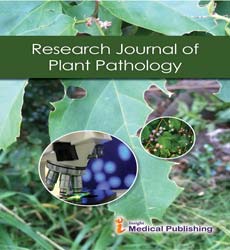Reactions of Plants to the General Lengths of Light and Dark Periods for Photoperiodism
Alvin Hurlbutt*
Department of Plant Biotechnology, National University of Villa Maria, Villa Maria, Argentina
- *Corresponding Author:
- Alvin Hurlbutt
Department of Plant Biotechnology,
National University of Villa Maria,
Villa Maria,
Argentina,
E-mail: hurlbutt.alvin59@yahoo.com
Received Date: July 13, 2021;Accepted Date: July 28, 2021; Published Date: August 04, 2021
Citation: Hurlbutt A (2021) Reactions of Plants to the General Lengths of Light and Dark Periods for Photoperiodism. J Plant Pathol.Vol.4 No.3:2.
Abstract
About the Study
Photoperiodism is the physiological response of life forms to the length of night or a dull period. It happens in plants and creatures. Photoperiodism can likewise be characterized as the formative reactions of plants to the overall lengths of light and dull periods. They are characterized under three gatherings as per the photoperiods: short-day plants, difficult day plants, and day-unbiased plants.
Many blooming plants (angiosperms) utilize a photoreceptor protein, for example, phytochrome or cryptochrome, to detect occasional changes in night length, or photoperiod, which they take as signs to blossom. In a further region, commit photoperiodic plants totally require a long or short sufficient night prior to blossoming, while facultative photoperiodic plants are bound to bloom under one condition. Phytochrome comes in two structures: Pr and Pfr. Red light (which is available during the day) changes over phytochrome to its dynamic structure (pfr). This then, at that point triggers the plant to develop. Thus, far-red light is available in the shade or in obscurity and these believers phytochrome from pfr to pr. Pr is the inert type of phytochrome and won't take into consideration plant development. This arrangement of Pfr to Pr change permits the plant to detect when it is night and when it is day. Pfr can likewise be changed over back to Pr by a cycle known as dim inversion, where extensive stretches of dimness trigger the transformation of Pfr. This is significant with respect to plant blossoming. Analyses showed that controls of the red-to far-red proportion in Arabidopsis can adjust blooming. They found that plants will in general bloom some other time when presented to more red lights, demonstrating that red light is inhibitory to flowering. Other trials have demonstrated this by presenting plants to additional red-light in the centre of the evening. A short-day plant won't blossom in case light is turned on for a couple of moments in the evening and a difficult day plant can bloom whenever presented to more red-light in the centre of the night.
Cryptochromes are another sort of photoreceptor that is significant in photoperiodism. Cryptochromes retain blue light and UV-A. Cryptochromes entrain the circadian clock to light. It has been tracked down that both cryptochrome and phytochrome bounty depends on light and the measure of cryptochrome can change contingent upon day-length. This shows how significant both of the photoreceptors are with respect to deciding day-length.
In 1920, W. W. Accumulate and H. A. Allard distributed their disclosures on photoperiodism and felt it was the length of sunlight that was critical, yet it was subsequently found that the length of the night was the controlling factor. Photoperiodic blooming plants are delegated taxing day plants or short-day plants despite the fact that evening is the basic factor in light of the underlying misconception about sunshine being the controlling variable. Alongside difficult day plants and short-day plants, there are plants that fall into a "double day length classification". These plants are either Long Short Day Plants (LSDP) or Short Long Day Plants (SLDP). LSDPs blossom following a progression of long days followed by brief days though SLDPs bloom following a progression of brief days followed by long days. Each plant has an alternate length basic photoperiod, or basic night length.
Present day scientists believe that it is the occurrence of the dynamic types of phytochrome or cryptochrome, made by light during the daytime, with the rhythms of the circadian clock that permits plants to quantify the length of the evening. Other than blossoming, photoperiodism in plants incorporates the development of stems or roots during specific seasons and the deficiency of leaves. Counterfeit lighting can be utilized to actuate extra-long days.
Open Access Journals
- Aquaculture & Veterinary Science
- Chemistry & Chemical Sciences
- Clinical Sciences
- Engineering
- General Science
- Genetics & Molecular Biology
- Health Care & Nursing
- Immunology & Microbiology
- Materials Science
- Mathematics & Physics
- Medical Sciences
- Neurology & Psychiatry
- Oncology & Cancer Science
- Pharmaceutical Sciences
